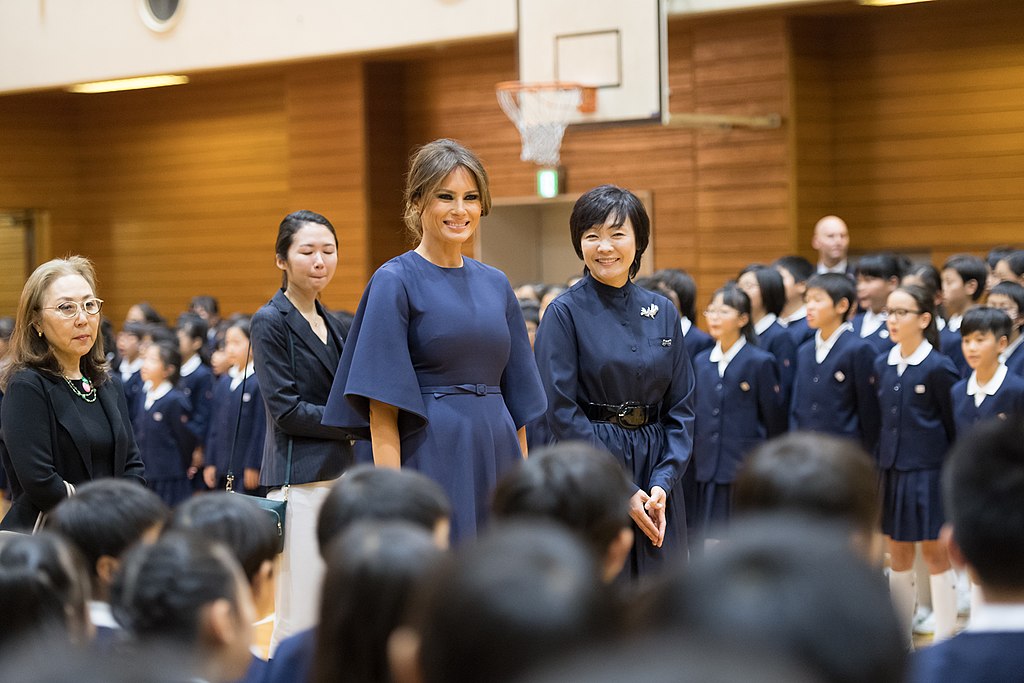Melania Trump’s path to U.S. citizenship has long been a subject of public curiosity and speculation, particularly during her time as first lady. As the wife of former President Donald Trump, whose administration made immigration reform a central issue, Melania’s journey from Slovenian immigrant to U.S. citizen has fueled questions and sparked rumors about how she navigated the complex process.
Born Melanija Knavs in Slovenia, Melania Trump immigrated to the United States in the mid-1990s to pursue a career in modeling. After securing work in New York City’s competitive fashion industry, Melania obtained a green card in 2001, which granted her lawful permanent residency in the U.S. By 2006, she had successfully become a naturalized U.S. citizen—just one year after marrying Donald Trump in 2005.
Melania Trump’s immigration story appears to follow a relatively straightforward legal process, moving from an immigrant with a temporary work visa to permanent resident status before ultimately obtaining U.S. citizenship. However, her journey has not been without controversy. Speculation over how she obtained her green card has circulated for years, with some questioning whether she benefited from the “Einstein visa” program—a category intended for individuals with extraordinary abilities in their field.
The EB-1 visa, commonly referred to as the “Einstein visa,” is typically reserved for individuals who demonstrate extraordinary ability in fields such as science, art, athletics, or business. Melania reportedly received this visa in 2001, a claim that has sparked debate among critics who question whether her modeling career met the requirements necessary for such a designation. Nevertheless, the visa allowed her to apply for permanent residency, and her status as a green card holder ultimately paved the way for her naturalization.
Despite the rumors surrounding the nature of her green card application, Melania Trump’s citizenship was finalized in 2006. By that time, she was already a high-profile figure due to her marriage to Donald Trump. The couple’s wedding, which took place at Mar-a-Lago, garnered widespread media attention, and Melania’s rise to first lady a decade later only intensified scrutiny of her immigration status.
It is important to note that there is no verifiable evidence to suggest that Melania Trump’s path to citizenship deviated from legal norms. The rumors and speculation remain largely unsubstantiated, though they continue to persist, particularly in light of her husband’s hardline stance on immigration policy. During Donald Trump’s presidency, the administration introduced restrictive immigration policies that were often criticized for targeting legal immigrants and asylum seekers, further fueling interest in Melania’s own immigration history.
Melania Trump herself has remained largely silent on the specifics of her journey to U.S. citizenship, allowing rumors to linger. While critics continue to question the circumstances of her visa and green card application, her status as a naturalized citizen is a matter of public record, with no concrete evidence to suggest any wrongdoing in her immigration process.



 U.S. and China Push for Ceasefire as Thailand–Cambodia Border Clashes Escalate
U.S. and China Push for Ceasefire as Thailand–Cambodia Border Clashes Escalate  Trump Attends Dover Ceremony Honoring U.S. Personnel Killed in Syria
Trump Attends Dover Ceremony Honoring U.S. Personnel Killed in Syria  Argentina Unions Rally Against Milei’s Labor Reform as Congress Debates Key Bill
Argentina Unions Rally Against Milei’s Labor Reform as Congress Debates Key Bill  Dan Bongino to Step Down as FBI Deputy Director After Brief, Controversial Tenure
Dan Bongino to Step Down as FBI Deputy Director After Brief, Controversial Tenure  Italy Supreme Court Upholds Salvini Acquittal in Migrant Kidnapping Case
Italy Supreme Court Upholds Salvini Acquittal in Migrant Kidnapping Case  U.S. Initiates $11.1 Billion Arms Sale to Taiwan Amid Rising China Tensions
U.S. Initiates $11.1 Billion Arms Sale to Taiwan Amid Rising China Tensions  Kennedy Center Reportedly Renamed Trump-Kennedy Center After Board Vote
Kennedy Center Reportedly Renamed Trump-Kennedy Center After Board Vote  Trump Administration Proposes Sweeping Limits on Gender-Affirming Care for Children
Trump Administration Proposes Sweeping Limits on Gender-Affirming Care for Children  U.S.-Russia Talks in Miami Raise Hopes for Potential Ukraine War Deal
U.S.-Russia Talks in Miami Raise Hopes for Potential Ukraine War Deal  Trump Signals Progress in Ukraine Peace Talks Ahead of U.S.–Russia Meeting
Trump Signals Progress in Ukraine Peace Talks Ahead of U.S.–Russia Meeting  U.S. Senators Move Toward Deal to Strengthen Military Helicopter Safety Rules
U.S. Senators Move Toward Deal to Strengthen Military Helicopter Safety Rules  Jared Isaacman Confirmed as NASA Administrator, Becomes 15th Leader of U.S. Space Agency
Jared Isaacman Confirmed as NASA Administrator, Becomes 15th Leader of U.S. Space Agency  Federal Appeals Court Allows Trump’s National Guard Deployment in Washington, D.C. to Continue
Federal Appeals Court Allows Trump’s National Guard Deployment in Washington, D.C. to Continue  Trump Expands U.S. Travel Ban to Antigua and Barbuda, Dominica, Sparking Economic Fears in the Caribbean
Trump Expands U.S. Travel Ban to Antigua and Barbuda, Dominica, Sparking Economic Fears in the Caribbean  EU Delays Mercosur Free Trade Agreement Signing Amid Ukraine War Funding Talks
EU Delays Mercosur Free Trade Agreement Signing Amid Ukraine War Funding Talks  Trump Administration Plans Major Increase in Denaturalization Cases for Naturalized U.S. Citizens
Trump Administration Plans Major Increase in Denaturalization Cases for Naturalized U.S. Citizens  Trump Administration Reviews Nvidia H200 Chip Sales to China, Marking Major Shift in U.S. AI Export Policy
Trump Administration Reviews Nvidia H200 Chip Sales to China, Marking Major Shift in U.S. AI Export Policy 































